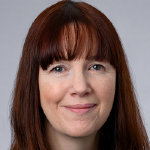- Receivables Purchase and Asset-Based Lending: Insights from First Brands: Part 2
- Siena Lending Group Transacted over $1B in Facilities in 2025
- Receivables Purchase and Asset-Based Lending: Insights from First Brands
- Karen Marino Joins JPalmer Collective as Head of Risk Management
- Back To The Future – The Advent Of Re-Shoring And Its Impact On Secured Financing
Andy McGhee on White Oak and the Lender Finance Market Ahead
By Michele Ocejo

At the time of its sale in 2017, AloStar had committed more than $3 billion to middle-market companies. McGhee has also served in various leadership roles covering asset-based lending (ABL) at SunTrust, Citicorp, Bank South and Bank of America. McGhee sits on the board of directors for Piedmont Hospital in Atlanta and is an Elder at Peachtree Presbyterian Church. He holds a B.A. in economics from the University of Georgia.
You joined White Oak in May. What attracted you to the company?
First and foremost, they have a very good reputation in the market. Their people are smart and are client-centric. There is a strong credit culture that is backed by a deep bench of professionals with significant experience; together with White Oak, we are able to develop our business and help our clients to get the financing they need. It was also a good fit when it came to vision, strategy and risk management, which are important in a quickly growing firm. They didn’t have a lender finance group, but they knew we did. The lender finance business is now part of White Oak Global Advisors’ broader asset-based lending platform, which currently has over 160 professionals, including those of its affiliates, dedicated to originations, underwriting and credit management and cover the entire product suite including invoice discounting, factoring, trade finance, and supply chain finance among others. What’s more, they do not shy away from complex transactions and they like to deploy capital in creative ways. Those are all positives for me.
How will the firm be able to help you in creating a lender finance business?
Crucially, White Oak has a prolific fundraising group and we were convinced that there would never be a liquidity issue around our product. We can get out into the market quickly and build a platform without major roadblocks or having to backtrack. Liquidity is critical in today’s environment, but particularly so for a business that’s defined by lending to other lenders who work in consumer or commercial finance. It’s a huge boost to us that White Oak has the resources to provide the kind of credit facilities that best serve clients with scalable and reliable financing solutions. Being fortified with that kind of foundation makes it a lot easier to build a robust lender finance business.
You came to White Oak with a team, correct?
That’s right. We arrived as a small team, having been given a mandate to grow the platform and personnel. I worked with Susan Hall and Neil Mulford, who joined White Oak at the same time as me. They were big contributors to the growth at AloStar. They know how to operate in a startup environment and build a business. Susan and I have worked together for almost 30 years and have assembled a couple of different platforms from scratch.
So, your entrepreneurial background will be a big plus at White Oak?
It will. If you look back over my career, I’ve always been in situations where I have tried to build and grow something. I went to SunTrust and was able to build a lender finance business from nothing. At AloStar, we also created something from the ground up. We bought a failing bank, wound it down and put together a commercial finance platform that grew to a $1 billion portfolio. Now we have the opportunity to partner with a great team that knows how to raise capital and execute deals. Again, White Oak has the capital and infrastructure to help us scale. We just have to grow our team prudently to go out and build the business.
Do you expect to contribute to White Oak in other ways?
While our main focus will be on the lender finance business, we can also help them grow their asset-based lending business. They do deals of different sizes: small, mid-size and large. We can help them with deals that range anywhere from $15 million to $200 million. There are synergies in the lender finance and asset-based lending businesses that we can leverage.
What makes White Oak unique?
As part of an alternative asset manager, we have the ability to be more creative and flexible in our lending terms. Taking a step back, regulations placed on the banks since the Global Financial Crisis have really changed how these institutions operate, and how they approach risk, in my opinion. After 2009, banks have been forced to limit the risk they hold on their balance sheets, putting them in a position where capital markets drive a lot of their business. So, they need to look at transactions that drive their capital markets fees.
By contrast, we can come in early in a lender’s lifecycle and become a long-term partner, not just someone who’s there to do a transaction. While the banks are being pushed into the position of structuring loans to meet a regulatory box, we cater to an investor’s risk-return profile. And those investors have different risk appetites, giving us more structuring opportunities with more borrowers.
We also have a “people” advantage because we have three seasoned veterans in this space. Unlike asset-based lending, which has been around forever, lender finance is a relatively new product for banks. So I think there really hasn’t been a lot of time to develop a deep bench in the space. The lender finance teams that have been successful have identified the right people to join their ranks; the teams that have struggled often hired less-experienced people who may have not known about the importance of infrastructure and systems to help manage their book of business. When you do that in the lender finance world, you can get yourself in trouble very quickly.
Are there particular niches in specialty finance where you plan to concentrate?
We are building a diversified portfolio of companies from many verticals within the lender finance business so we’re not just a two or three-category leader. We like ABL, factoring, consumer finance, and distressed assets, among others. Adding more than a dozen different buckets of asset classes to fill out the portfolio will give us a lot of granularity, options and diversification. Having many different products and verticals better protects the business if one particular company happens to hit a bump in the road.
Is expanding globally part of your agenda?
Absolutely. White Oak Global Advisors and its affiliates already have a presence in Europe and Australia, mostly in developed markets, so we think we’ll be able to take advantage of those relationships.
How is the COVID-19 crisis affecting your business?
We have to understand how the economic slowdown has impacted every single company because it isn’t hitting everyone equally. A lot depends on the diversification of their client base and the products they sell. We also need to understand how a company will fare in a world where it might be smaller over the next 18 months. Smaller companies with less equity may have difficulty repositioning to survive. The Paycheck Protection Program was a positive, but another large-scale shutdown would be extremely difficult for these businesses. We’re working to find creative solutions for companies to keep their staff employed, so that when the economy does come back, they’ll have the resources to grow.
It’s also important to consider the outlook for middle-market companies throughout the pandemic and how that affects their borrowing needs. These businesses are anxious. According to second-quarter numbers in a survey released by Chubb and the National Center for the Middle Market, middle-market firms recorded a clear decline in economic confidence, revenue and employment growth, as well as a higher awareness of risk— especially where business environment volatility is concerned— compared to the same survey for Q4 2019. Late last year, middle market businesses were far more optimistic about the future. Today, the longer the pandemic lasts, the more uncertain and perilous they say that future grows.
Whether we’re talking about the lenders to middle-market companies or the companies themselves, they’re looking to us for reassurance and help.
On a different note, the pandemic has also made it harder to meet with your customers in-person. I still like to walk the factory floor and sit down with CEOs to hear what they’re doing with their companies so we can structure the right debt instrument for them. You can still do that today, but it’s more difficult.
What impact is information technology having in your industry?
Historically, this has been a very people-intensive business. For years, you had to pour through tons of information manually. You’d also talk to your clients multiple times per week and get a lot of information on borrowing bases. Now, thanks to technology, we can collect data faster, do more granular analysis and identify trends earlier, all of which gives us significant operating leverage to benefit our clients. I would expect that to continue.
Technology is also making our people more efficient. For example, a portfolio manager might have been able to handle ten relationships in the past. With better technology to run different scenarios, we can add more accounts to her plate without sacrificing the quality of her work.
You are starting yet another new business. What’s the appeal of that for you?
I love to create something out of nothing, guide it as it builds to scale and then watch the employees reap the benefits. I get a big thrill watching its impact ripple through each company.


.jpg?sfvrsn=f1093d2a_0)
